How to Tame (Train!) Your Budgie
One question we get asked fairly often is how to tame a Budgie. We’ve always found this a bit of a strange enquiry because like most birds that live in flocks in the wild, Budgies are very sociable and enjoy human company. As such, they don’t need to be tamed per se.
In fact, we believe that most people are actually asking how they can get their Budgie used to their new surroundings, and how to train it. Those are very different questions, and ones that are worthy of some consideration.
Settling in a New Budgie
Once you’ve picked your new Budgie up, the first thing you need to do is get them used to their new home. Done sensitively and in the right way, this isn’t a long or difficult process, but if you try to rush it, you could end up with a nervous bird that might struggle to bond with you.
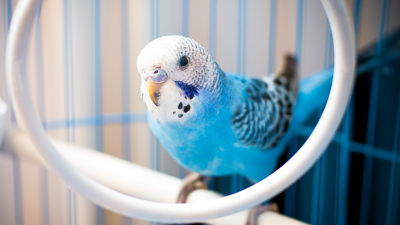
If you’re keeping your Budgie in a cage in the house, as opposed to an aviary, then try to place the cage at head height. This is because movement above the cage can scare the bird – birds are naturally scared of things moving above them because in the wild it is likely to be a predator in the shape of a bird of prey – so arms moving over the cage or faces staring down may cause them stress.
Ideally, put the cage in a corner or against a wall as this will make the bird feel safer. If it is in the middle of a room with activity going on all around the cage, this could unsettle your new feathered friend, making it difficult for them to settle in.
Soft, Calming Voice
Once your new bird is resident inside their cage, approach it slowly stand close so they can start getting used to your presence. Speak to them in a soft, calming voice and slowly move your arms and hands towards the cage while continuing to speak to them. This will get them used to you carrying out activities such as changing their food and water.
Ensure you don’t make any sudden noises or movements at this stage as this is likely to scare your bird and could ruin any attempts to settle him or her down into their new surroundings. By speaking gently and softly, they will soon learn yours is a friendly voice and that will have a calming effect on them. It will also help them to bond with you and once that bond is established, it should give you a lifetime of happy memories.
Repeat This Approach Often
Don’t be concerned if your new Budgie appears very scared the first few times you approach their cage. This is normal as everything is new and he or she is in totally unfamiliar surroundings. Remember, each bird is different and has its own personality so whether it is a baby bird or an older bird from a rescue, be patient and let them go at their own pace.
Don’t Forget the Treats!
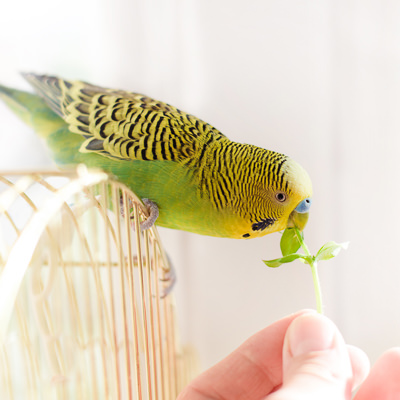
Like puppies, kittens, children and adults, Budgerigars love a treat. Once the bird is happy with your presence near their cage, introduce a moderate number of treats into the habituation routine, always being conscious not to detract from their main diet. Treats are individual to the bird’s preferences, so try different foods such as sprouting seeds, millet sprays, chopped fruits or vegetables, and watch how they react to them.
This has a two-fold effect. As well as the food being a treat for your bird, your Budgie will start to associate you with tasty treats and look forward to seeing you even more. That will reinforce the bonding process.
Handling Your Budgie
The next step is handling your Budgie. If you follow the rules of acting calmly and speaking in a soft and gentle voice, your new pet should get used to your presence fairly quickly, probably in just a few days.
However, being handled is a big step and this might take some time, depending on the individual bird.
First start by opening the cage and placing your hand inside. If your bird goes berserk, continue to speak to him or her softly until they settle down. If they show no sign of settling down, remove your hand and close the cage, and leave them to relax for a bit. Then try again.
With repeated attempts, your Budgie should become relaxed with you placing your hand inside the cage.
Once this happens, whatever you do, do not jump straight into trying to pick up the bird. This is likely to undo all the hard work you’ve done so far. Instead, use treats to encourage your Budgie to take food from your hand. Again, do not make any sudden movements as this will scare the bird and be patient – this step might take time.
Touching the Budgie
Once he or she is successfully feeding out of your hand, slowly and gently try to stroke and tickle him or her with your other hand. The nape of the neck is usually a good place. Make sure you approach the bird very carefully with your other hand, as moving too fast is likely to scare them and set the whole process back.
Finally, once your bird is confidently taking food from your hand and you can stroke and tickle them without any fear, you can move on to finger training.
As with every stage in this process, the timing will be dictated by your new friend, not you. A confident bird might settle into their new home and bond with their owner quickly, whereas a more cautious bird will take longer. The important thing is to listen to your bird, move at their pace and don’t get frustrated and try to rush the process as this is likely to be detrimental. Here is how you do it …
Hand Training your Budgie
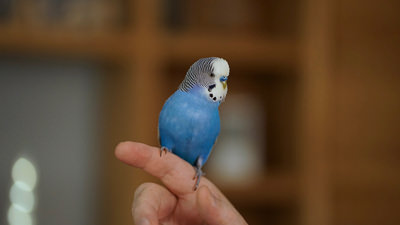
Put your hand in the cage and stick out the finger you want them to perch on. With the other hand, take their favourite treat and hold it in a place so that the bird has to step on to your finger to get it. Then, speaking softly to the Budgie, encourage them on to the finger with the treat.
If the bird does not get on your finger after trying for a while, take your hands out and under no circumstances give them the treat. Wait half an hour and try again. Repeat this until they finally do get on your finger. Then you can give them the treat.
If you continue do this, the bird will soon learn to get on your finger as soon as you put it in front of them without the need for a treat. When this occurs, they will have completely settled into their new surroundings and will be well into the process of bonding with you, making for a lifelong friendship.
Training Your Budgie to do Tricks
Budgie training can go way beyond just having your feathered friend perch on your finger. There are all sorts of ladder tricks, stick tricks, ball tricks and sliding tricks they can be taught to do.
Not only is this entertaining for owners, learning tricks can also provide lots of mental stimulation for Budgies, helping to keep their physical and mental wellbeing in tip top condition.
Keys to success are to reward desired behaviour with treats your Budgie loves as this will encourage them to repeat the process, and to keep training sessions short. If the Budgie gets bored or frustrated, they might not want to take part in future training sessions.

The Ladder Trick
A great trick to begin with is teaching your Budgie to climb a ladder on command.
To train this, get your bird to perch on your finger and then place him on the bottom rung of a Budgie-sized ladder. Once he’s there, choose a command you want to use (such as ‘up you go’) and dangle his or her favourite treat at the top of the ladder. This should inspire them to climb up towards the treat. If they do that, give them it. If not, try again until they do.
This should be mastered in a short time as Budgies are natural climbers. Once it is, start with the bird further away from the ladder, and give the command and encourage them up the ladder with the food. The important thing is to link the behaviour with the command in the bird’s mind and once this has happened, you should be able to give the command at any point, and the bird will go scurrying up the ladder from anywhere in the cage without the need for a treat.
There are lots of other tricks Budgies can learn and they will usually enjoy doing this. Teaching tricks is also a fantastic way to engage with your bird, making it great fun for owners too.
Patience is the Key to a Well-Trained Bird
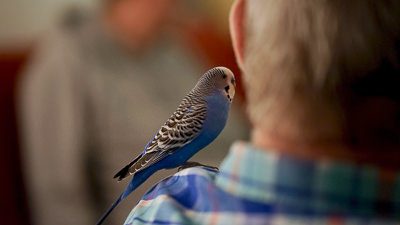
As with all animal training, the key to having a well-trained Budgie is patience and not rushing. There are many articles online that claim you can ‘tame a Budgie in 30 minutes’ or ‘train a bird in 30 minutes’ and in some instances, this might work. But in the majority of cases, longer will be needed to ensure your bird is fully trained – 30 minutes a day for several days is more likely to yield the results you want.
Ultimately, listen to your bird. They will tell you how much training is required. If they are confident and jump on to your finger in the first training session, fantastic. But many birds, particularly baby Budgies, may start off the process quite nervous and develop confidence over time. Be patient, move at their speed, keep calm and reward them, and you’ll soon have a well-trained bird who loves spending time with you.
To find out more about our range of high-quality Budgie food, click here https://johnstonandjeff.co.uk/aviary-match-species-to-blends/
Our recent posts giving advice and guidance on aviary birds
What’s Not to Love About the Colourful Lovebird?
Reading Time: 12 minutes Sometimes referred to as ‘pocket parrots’ due to their size, they are colourful, charming characters that can make adorable pets. With a name like Lovebird, it’s not surprising these are among the most popular small parrots to own.
How to Tame (Train!) Your Budgie
Reading Time: 10 minutes One question we get asked fairly often is how to tame a Budgie. We’ve always found this a bit of a strange enquiry because like most birds that live in flocks in the wild, Budgies are very sociable and enjoy human company. As such, they don’t need to be tamed per se.
Budgies – the UK’s Favourite Pet Bird
Reading Time: 6 minutes Budgies – also known as parakeets – are the most popular companion bird in the UK and it is easy to see why. These colourful little birds are every bit as intelligent as their bigger cousins, but at just seven or so inches in height, they take up much less room than an African Grey or ...








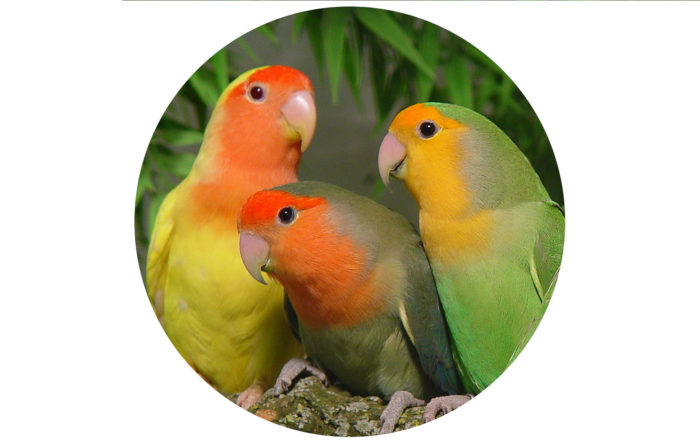
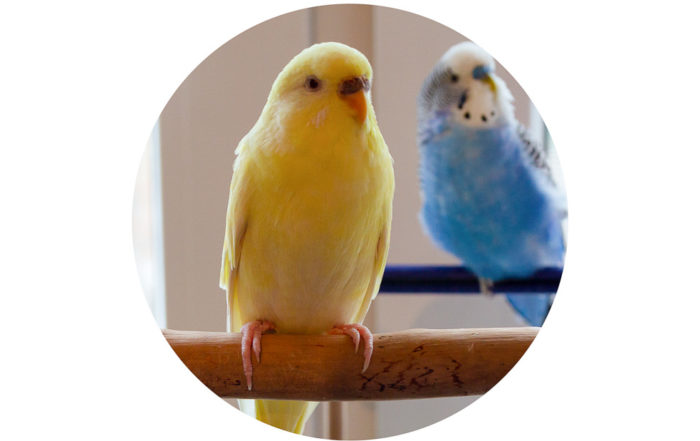
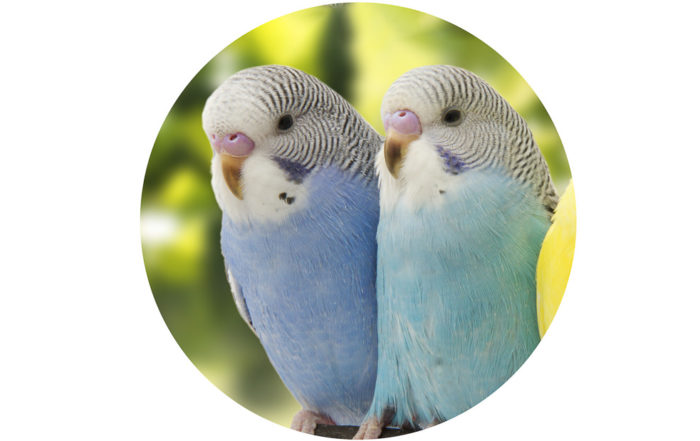
Leave A Comment